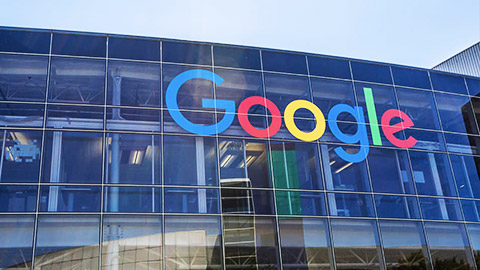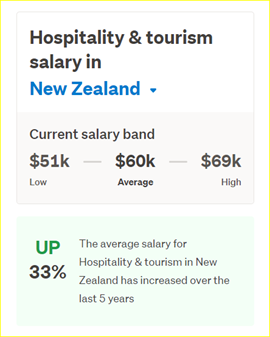The purpose of managing people and performance is to encourage commitment and contribution to the organisation and its performance. The functions that fall within this area are:
- Performance Appraisals
- Health, Safety and Wellness
Performance Appraisals
It is important to establish performance standards early on and then manage the new employee’s performance to meet those standards on an ongoing basis. This involves constantly monitoring employees’ performance and giving feedback to further motivate, guide, and develop them. Many companies have formal performance management procedures in place. Often, they involve performance appraisals. A performance appraisal is completed with a new staff member when their trial period is due to finish. This is normally after three months (90 days), although it can vary and will be detailed within the company policy and employment agreement. Most organisations have formal yearly performance appraisals for all employees. However, it is a good idea to meet regularly with all employees on an informal basis to check their performance and give them positive and constructive feedback. Most people welcome the opportunity to talk about how their work is going. Performance management can be linked to rewards. This may be a progression on the career path, i.e., a promotion, a pay rise, or some other appropriate type of reward which is appropriate.
Watch this video
It is Big Keith’s Appraisal in the BBC comedy, The Office, which shows how NOT to conduct a performance appraisal. (2:57)
Learning Activity: Managing Employee Performance
Answer the following questions based on your learning so far in this topic.
- Why do you think it is important to manage employee performance?
- List four good practices and share your findings with your online peers in the Forum, Managing Employee Performance.
The Department of Labour highlights the importance of managing employee performance with the following points:
- To ensure employees have clear targets and perform to agreed standards regarding what is expected and how the results are achieved
- Ensuring employees understand what is expected of them and delivering to agreed targets will enhance their contribution to your business, helping you to achieve your business targets. It is also more likely to result in higher productivity and motivation through increased job satisfaction
- Managing performance fairly and clearly defined can also help avoid problems later if an employee is not meeting agreed standards.
This is evident in the flow chart below.
Employee Performance
A critical part of a manager or supervisor’s job is working with employees to make sure they understand what they need to do and how and when they need to do it. Understanding and, where possible, agreeing to those expectations should happen as part of an employee’s induction or at least within a few weeks of starting the job. These expectations/objectives can be recorded in a 'performance agreement’.
Important
It is important to have these in place as the employee will be assessed against them in their role.
Explore more about employee performance.

It is important to understand the purpose of Key Performance Indicators (KPIs). There are six steps, which will ensure the appraisal process is well-considered and carefully prepared. These are:
- Set the KPIs (key performance indicators, i.e., standards). This should have been done when writing the job description and/or after the last appraisal.
- Communicate those standards. This would have been done during the induction, when new responsibilities were added or at the last appraisal.
- Measure performance. This is the critical part. You need to collect data throughout the year objectively and fairly. There are different methods available which will be discussed next.
- Compare results with the standards. Analyse the data you collected and put the results in an easy-to-read format. Most organisations have an appraisal form for this.
- Meet with the team member to review the results. This is a critical part of the process and can cause stress for both parties. You are required to handle the interview with sensitivity and professionalism. Remember, it should be a POSITIVE experience for both of you.
- Plan future action. Establish training or coaching required. Outline expected actions and outcomes. Set a date and time to review the action.
These steps are evident in the following infographic.
Multiple performance management systems can assist managers in supervising their staff and building the best team. We are going to look at just three in-depth:
Behaviourally Anchored Rating Scales (BARS) is a process that typically uses a vertical scale with ratings ranging from five (5) to nine (9) that represent various degrees of performance, from poor to very good.
Management by Objectives (MBO) is a result-oriented, goal-setting management model that focuses on collaborative goal-setting between managers and employees. It is also known as Management by Results, Goal Management and Management by Planning.
360-degree feedback is a method of employee review that provides each employee with the opportunity to receive performance feedback from their supervisor or manager and four to eight peers, reporting staff members, co-workers, and, in some cases, customers. This type of feedback allows everyone to understand how their effectiveness as an employee, co-worker, or staff member is viewed by others. The most effective 360-degree feedback processes provide feedback that is based on behaviours that other employees can see.
- Behaviourally Anchored Rating Scales (BARS)
The BARS (behaviourally anchored rating scale) is a scale that assesses the performance of new employees or trainees based on well-defined behavioural patterns. These patterns are used to rate each employee. A behaviourally anchored rating scale is an essential component of any structured interview.
- Management by Objectives (MBO)
Management by Objectives (MBO) is a result-oriented, goal-setting management model that focuses on collaborative goal-setting between managers and employees. It is also known as Management by Results, Goal Management and Management by Planning.
- 360-Degree Feedback
360-degree feedback is a method of employee review that provides each employee with the opportunity to receive performance feedback from their supervisor or manager and four to eight peers, reporting staff members, co-workers, and, in some cases, customers.
This type of feedback allows everyone to understand how their effectiveness as an employee, co-worker, or staff member is viewed by others. The most effective 360-degree feedback processes provide feedback that is based on behaviours that other employees can see.
Click on the following headings to learn more about the three management systems.
Description
Behaviourally Anchored Rating Scales (BARS) are designed to bring the benefits of both qualitative and quantitative data to the employee appraisal process. BARS compare an individual’s performance against specific examples of behaviour that are anchored to numerical ratings. For example, a level four rating for a nurse may require them to show sympathy to patients while a level six rating may require them to show higher levels of empathy and ensure this comes across in all dealings with the patient. The behavioural examples used as anchor points are often collected using Critical Incident Techniques (CIT), which are procedures used for documenting human behaviour that have significance in a particular area. BARS was originally developed to counteract the perceived subjectivity in using basic ratings scales to judge performance, although BARS is still subject to criticism. It is often accused of being subject to unreliability and leniency errors.
Advantages
Since the ratings are by people who are familiar with the working environment, they have a greater chance of being accurate. This also involves participation by the workings to a considerable degree. It is also specific to the job function and behaviour that can be observed easily.
Disadvantages
Despite its intuitive appearance, the system has some inherent downsides. The designing of effective BARS is time-consuming in the first place. The behaviours used for rating are more actively orientated rather than result-oriented. This leads to a situation where supervisors will have to give a higher rating to employees who are just involved in an activity but do not show results.
(Source:www.chrmglobal.com)
Description
Management by Objectives (MBO) is a personnel management technique where managers and employees work together to set, record and monitor goals for a specific period. Organisational goals and planning flow top-down through the organisation and are translated into personal goals for organisational members. The technique was first championed by management expert Peter Drucker and became commonly used in the 1960s.
Advantages:
MBO has some distinct advantages. It provides a means to identify and plan for the achievement of goals. If you don't know what the goals are, you will not be able to achieve them. Planning permits proactive behaviour and a disciplined approach to goal achievement. It also allows you to prepare for contingencies and roadblocks that may hinder the plan. Goals are measurable so that they can be assessed and adjusted easily. Organisations can also gain more efficiency, save resources, and increase organizational morale if goals are properly set, managed, and achieved.
Disadvantages
However, MBO is not without disadvantages. Application of MBO takes concerted effort. You cannot rely upon a thoughtless, mechanical approach, and you should note that some tasks are so simple that setting goals makes little sense. For example, if your job is snapping two pieces of a product together on an assembly line, setting individual goals for your work isn't necessary.
Rodney Brim, a CEO, and critic of the MBO technique, has identified four other weaknesses. There is often a focus on mere goal setting rather than developing a plan that can be implemented. The organisation often fails to consider environmental factors that hinder goal achievement, such as lack of resources or management support. Organisations may also fail to monitor for changes, which may require modification of goals or even make them irrelevant. Finally, there is the issue of plain human neglect - failing to follow through on the goal.
(Source: http://study.com)
Description
360-degree feedback is a method and a tool that provides each employee the opportunity to receive performance feedback from his or her supervisor and four to eight peers, reporting staff members, co-workers, and customers. Everyone also responds to most 360-degree feedback tools in a self-assessment.
Advantages
There is improved feedback from more sources. Regarding team development, this feedback approach helps team members learn to work more effectively together. When feedback comes from several individuals in various job functions, discrimination because of race, age or gender is reduced.
Disadvantages
There can be exceptional expectations for this process: 360-degree feedback is not the same as a performance management system. It is merely a part of the feedback and development that a performance management system offers within an organisation. Often, a 360-degree feedback process arrives as a recommendation from the HR department or is shepherded in by an executive who learned about the process at a seminar or in a book. For a 360-feedback process to work, it must relate to the overall strategic aims of the organisation. Since 360-degree feedback processes are currently usually anonymous, people receiving feedback have no recourse if they want to further understand the feedback.
In addition to the insufficient training, organisations provide for both people receiving feedback and people providing feedback, there are numerous ways raters go wrong. In terms of paperwork or computer data input, this feedback raises the sheer number of people participating in the process and the subsequent time invested.
(Source:www.thebalance.com)

Organisations, as employers, are responsible for the health and safety of all employees. In New Zealand, the Health and Safety at Work Act 2015 is the law that promotes the prevention of harm to all persons at work and other persons in, or in the vicinity of, a place of work. Wellness is not covered by the Health and Safety in Employment Act. It can be a separate HRM function that aims to ensure the well-being of employees. We will look at it in detail after spending time on health and safety.
Health and Safety
This is the only HRM function that is specifically required by law. Organisations must ensure the health and safety of all employees; therefore, it is a core HRM function. We will look at the Health and Safety at Work Act 2015 later in the module, giving you a deeper understanding of the employer's and employee’s responsibilities.
Wellness
If you are feeling well, you will be in a good physical and mental state. Wellness is a relatively new function of HRM; consequently, it is performed by only some organisations. However, it is becoming more recognised, and more companies are attempting to implement it. Wellness has become a function in response to negative issues such as absenteeism, poor work performance, and stress in the workplace. The wellness function involves creating a workplace that allows people to maintain a healthy mind and body. In other words, organisations are trying to improve the quality of work life.
Reading
Read the article ‘8 Top Workplace Wellness Trends to Watch in 2023’ by Ted Kitterman. This will improve your knowledge of how wellness is important in the workplace.
Important
Is 2023 the year when companies walk back pandemic-era efforts to improve well-being?
How will employers invest in their workplace wellness in 2023?
Some companies are cutting costs to increase profits. Google dismissed its head of mental health and well-being as part of its recent layoffs, along with others on the mental health team.
Compared with a typical company, employee well-being is one of the biggest differentiators for companies on the 2023 Fortune 100 Best Companies to Work For® List. Of employees at one of these top companies, 83% report having a psychologically and emotionally healthy workplace.
Here is where companies that are investing in well-being in 2023 are focusing:
- Focus on Flexibility
We know it's not a one-size-fits-all approach, and flexibility means personalising the work experience, from remote work policies to offering time away from the job. Flexibility is also an important part of the well-being strategy for employees who can’t work remotely. Employees want less prescriptive management of how they spend their time and more focus on the high-impact results they deliver. They want more flexibility during the day, and expectations have shifted around always being 'on' or round-the-clock availability for work.
- Fight Burnout with Time Off
As we continue into 2023, burnout is the biggest threat to employee well-being. To fight burnout, the strategy is simple: Get employees to take breaks and recharge. Specific companies encourage employees to take time away from work, and ‘Flex Fridays encourages employees to avoid morning meetings on Fridays and take the afternoon to unplug.
- Invest in Caregivers
Caregiver responsibilities and other challenges continue to increase for the sandwich generation — people having to care for both aging parents and children — and for working parents, which strain work-life effectiveness and take a toll on mental health.
- Offer Financial Education
Financial stress has been on the rise amid rising inflation and recession fears. The hotel chain, Marriott recently enhanced its retirement plans, launched an employee stock program, and offers financial wellness programs designed to educate employees on how to build financial stability.
- Prioritise Mental Health
Mental health continues to be a crucial concern for employers in 2023. According to research, employees say managers have a greater impact on their mental health than doctors or therapists. For Marriott, mental health support includes free access to a digital mental well-being platform that offers personalised resilience solutions and training and mental health coverage in health care plans.
- Develop a Sense of Belonging
For leaders concerned about fractured relationships and a lack of cohesion across their workforce, it’s time to focus on belonging and camaraderie. The pandemic has changed how we work, and people feel a range of emotions about the experience. Employers who focus on re-building community will help their employees return to where they’re thriving.
- Leverage Technology
Business leaders are excited about the power of technology to create solutions that improve the well-being of workers. A digital assistant makes coordinating employees’ time off possible, making it easier to plan and take uninterrupted time off. “The use of technology to help drive that positive behaviour change.
- Listen, and then Listen Again
Today’s workers demand an employer who listens and acts — or they will leave for one who does. Listening is also how leaders show their commitment to well-being as a company value. Employees are looking for a culture where their leaders and teams are committed to their well-being as a priority. They want employers to step back and recalibrate working methods to support their well-being.
Explore
There is a wealth of resources based on wellness trends. Click on the links to read more about specific examples:
New Zealand examples
Global websites
The definition of corporate well-being is any program designed to encourage healthier lifestyle choices for the workplace. The goal is to support employees in achieving a healthy lifestyle both physically and mentally. If your employees aren’t well — mentally or physically — they can’t work well. The average worker spends 1,900 hours at work each year. That’s a lot of time on the job. If the workplace isn’t a healthy environment or aimed at improving a worker’s well-being, it can have detrimental impacts.
By embarking on wellness programs, employers are proactive (trying to avoid problems) rather than reacting to problems when they arise. This can save money in the long run and lead to a more productive, happy workforce. Research shows that employees who are healthier tend to be more productive in the workplace because they're more rested, energised, and motivated to complete their work to the best of their abilities. By participating in wellness programs in the workplace, employees remain focused on maintaining healthy behaviours like exercise, which is shown to improve sleep and increase productivity in the workplace.
That’s why keeping workplace well-being at the forefront is a must!
When employees are healthy overall, they can achieve better results all around in their lives. In the workplace, at home, and in society — they function best when they are balanced in wellness. More workplaces are considering the benefits of incorporating everyday well-being ideas and activities into practice.
Having a wellness programme in place can:
- Reduce employee turnover
- Attract the best talent
- Improve employee morale
- Decrease presenteeism
- Minimise absenteeism and lost work
And a thoughtful well-being plan can:
- Reduce injuries
- Minimise absenteeism
- Increase employee engagement
- Reduce disability-related costs
- Boost productivity in the workplace
- Lower employees’ and employers’ healthcare and ACC costs
In 2014, estimates showed that New Zealand lost approximately 6.7 million working days to absence, which amounted to $1.4b across the economy. The average cost to employers of absentee and presentee days is estimated at over $1500 per year, per employee.
Source: https://workplacewellbeing.co.nz/workplace-wellbeing-why-is-it-important/
Remote Working Wellness

Healthy employees are likely to be happier and calmer. Small strategies can make employees feel better and are easy to integrate into the workday, which can include:
- Walking meetings. Video meetings can be crucial for maintaining connections, but not every meeting needs to be on video. Employees could have a phone meeting as they stroll around their neighbourhood.
- Lunch break posts. Office-based workers need a lunch hour when they can recharge, and eating a sandwich in front of a laptop shouldn't count. HR can encourage employees to take their full lunch break, then ask them to post on Slack or Teams about how they spent their time. For example, employees can post that they took a dog for a walk, played board games with a child, or participated in an exercise class.
- Screen breaks. Employees are more likely to feel stressed if their eyes are smarting at the end of the day. HR should educate workers about the importance of screen breaks and encourage setting timers for 20-minute intervals. Once the timer dings, workers should look at a distant object for 20 seconds.
- Reimbursement of blue-light-blocking glasses. Glasses for blocking blue light can help workers combat the effects of staring at a laptop all day. Companies can offer discounts or full reimbursements.
- Employee stress balls. Wrist strain at the end of a long day of typing is a persistent danger for office workers. Companies can send workers stress balls along with a handout (sent virtually to save paper) about suggested stretches and how often to do them.
- Meatless Monday recipes. Many people who want to get healthier and help the planet do so in part by reducing their meat consumption. HR, managers, or employee resource groups can support this by posting some vegetarian and vegan recipes and encouraging workers to send in their own favourites. Employees can then post photos of their delicious meals.
- Standing desk discount. Standing desks can help office-based employees feel more alert, likely reducing stress, but a standing desk's cost can be prohibitive. Discounts should be offered to interested workers.
- Stretching encouragement. Every employee needs a stretch break. HR departments can email employees literature about how often they should be getting up and stretching between tasks and meetings.
- Online yoga class. Midday yoga can be a great mental break. Yoga with Adriene is one popular choice, with videos for all skill levels.
- Stretching videos. If workers want to practice mindfulness on their own, HR or other groups can share stretching videos to follow during quiet moments.
- Mindfulness apps. Employees may want to pursue mindfulness but don't know where to start. HR can send out a list of apps like Headspace for Work.
- Meeting Zen time. Higher-ups can begin a meeting with breathing exercises rather than launching immediately into an agenda. Employees may feel better and less stressed once the business of the hour begins.
- Gratitude challenge. Employees' thankfulness messages shouldn't be limited to Christmas. HR or group managers can launch a gratitude challenge and ask workers to share what they are happy to have in their lives. Messages should stick to intangibles like family and friends or small joys.
- Active listening workshop. Every worker can use a brush up-on active listening. An outside expert can review best practices for active listening so employees don't feel stressed during meetings when communication goes awry.
There are also fun activities that can create a feeling of community, which can include:
(Team bonding may seem difficult, but plenty of activities to keep up team spirit and possibly lower employees' stress levels can be done virtually. Making everything optional so workers don't feel pressured to take part is a crucial aspect of these ideas).
- Virtual escape room. Replicate the escape room experience online.
- Virtual brewery tour. A virtual experience can replicate the fun and stress-lowering nature of going out for after-work drinks. Nearby breweries or wineries may offer online-only experiences.
- Birthday and going-away acknowledgments. Keeping up in-office celebratory traditions is important. Employees' birthdays and departures should continue to be big events, with virtual cards and other markers.
- Dress-up Zoom meetings. Virtual meetings need to happen, but there are plenty of ways to fight Zoom fatigue and make them less stressful. For a particular event or meeting, encourage workers to attend dressed as their favourite fictional character or in sports gear.
- Virtual trivia. Employees can have fun showing off their knowledge. A worker can host, or local trivia companies may be up for taking charge of the evening.
- Zoom cooking or baking. COVID-19 restrictions contributed to the popularity of home-based culinary arts exploration as people have looked for home-based fun. Workers can participate in a cooking or baking class, or a particularly knowledgeable employee can lead the way.
- Virtual games. Game-loving employees can find a few that will have wide appeal, then schedule some after-hours fun.
- Craft night. Creating something tangible after work can be relaxing for employees. HR can find an easy-to-make yet satisfying craft, and then encourage workers to make something beautiful.
- Virtual coworking sessions. Replicating an office atmosphere could lower employees' stress by strengthening connections. Create coworking sessions during which employees can get tasks done but have casual chitchat while doing so.

Source: https://www.techtarget.com/searchhrsoftware/feature/30-easy-ways-to-help-employees-manage-stress
Case Study: Google

(Image source: https://www.rnz.co.nz/news/business/447870/possibility-of-more-tech-jobs-as-google-opens-new-headquarters)
Google is a company that is internally recognised for offering staff perks and encouraging wellness in the workplace. Google information on wellness can be found at the following link.
Benefits at Google.Here is a list of the benefits Google offers employees working at its Mountain View, California campus.
| Benefits - Google |
|
Tuition Reimbursement We'll help you pursue further education that is relevant to what you do. You must receive grades of "B" or better. Why a "B" or better? Because we said so. Tuition reimbursement is up to $12,000 per calendar year. |
|
Employee Referral Program Good people know other good people. Our best employees have been hired by referrals. Google encourages you to recommend candidates for opportunities here and will award you a bonus if your referral accepts our offer. We pay out these bonuses a month after the referral starts at Google. |
|
Back-Up Child Care As a California employee, when your regularly scheduled childcare falls through, Google will provide you with 5 free days of childcare a year through Children's Creative Learning Centre (CCLC). There are 13 Bay Area locations serving ages 6 weeks - 12 years. |
|
Gift Matching Program Google matches contributions of up to $12,000 per year from eligible employees to non-profit organisations. Bolstering employee contributions to worthy causes with matching gifts doesn't just mean helping hundreds of organisations, both locally and globally, it's also a tangible expression. We want Googlers to get involved - and the company is right behind you. |
|
Adoption Assistance Google assists our employees by offering financial assistance in the adoption of a child. We'll reimburse you up to $5000 to use towards legal expenses, adoption agencies, or other adoption professional fees. Parental leave and take-out benefits also apply. |
|
Food Hungry? Check out our free lunch and dinner - our gourmet chefs create a wide variety of healthy and delicious meals every day. Got the munchies? Google also offers snacks to help satisfy you in between meals. |
|
On-Site Doctor At Google headquarters in Mountain View, California you have the convenience of seeing a doctor on-site. Physical therapy and chiropractic services are also available. |
|
Shuttle Service Google is pleased to provide its Mountain View employees with free shuttles to several San Francisco, East Bay, and South Bay locations. |
|
Financial Planning Classes Google provides objective and conflict-free financial education classes. The courses are comprehensive and cover a variety of financial topics. |
|
Other On-Site Services At Google headquarters in Mountain View, you'll find on-site oil change and car wash services, dry cleaning, massage therapy, gym, hair stylist, fitness classes, and bike repair. |
|
Other Great Benefits Halloween & holiday party, health fair, credit union, roller hockey, outdoor volleyball court, discounts for products, and local attractions. |
Learning Activity: Wellness Programmes
Address the two tasks in this learning activity.
- Research two different organisations to see what Wellness programmes they have on offer. Use your own words and reference your sources.
- Imagine that you have been asked to develop a wellness programme for NZST Tours that will be distributed among their employees. Create a one-page A4 (portrait) flyer to distribute to all employees to promote your wellness programme, using a combination of text and imagery.
Post your responses to the two tasks in the Forum, Wellness Programmes and share them with your online peers.

The purpose of developing people and performance is to ensure employees have the knowledge, skills, and competencies required for current and future performance.
The functions that fall within the developing area are:
- Training
- Personal and career development
- Coaching and mentoring
Investing in people and performance development is important for any business that wants its staff to progress. Organisations should see their staff as an asset that is worth investing in. If their organisation is not developing staff, they will eventually leave, and as a result, the organisation will need to start employing and training new people. Development is likely more cost-effective than replacement.
Training is the means to professional development. Professional development assists staff in personally developing and enhancing their career opportunities. It may even lead to the achievement of qualifications. Organisations should have a clear career path outlined for employees. Training will help them advance higher ‘up the ladder’ and lead to promotion and/or movement around the organisation.
Training
When studying the recruitment and selection function, we learned that people are hired because they possess a certain skill or level of knowledge. However, there will always be a need to train new staff members on the organisation's specific procedures or in other areas where they need more expertise.
Many companies spend a lot of money offering courses and training to their staff without assessing their actual needs. To avoid this, it is important to complete a training needs analysis.
There are three steps to ensure we analyse, design, and evaluate the training process.
Click on the following headings to further explore the three steps.
Training needs could exist at different levels, for example, at an organisational level, department level, or individual level. You must complete a training needs analysis to deliver the correct training. This is where you establish the gap in ability/performance/knowledge/skills that needs to be addressed.
Questions to consider when conducting a training needs analysis:
- What will the business look like in two years?
- What skills do we need to succeed?
- What skills do we have now?
- How are we going to get the new/additional skills?
- What training capabilities do our staff have/do we need to seek outside training?
Once you have established the gap through your analysis, you need to consider how the training will be delivered.
Factors to consider when designing and developing training plans:
- What are the learning outcomes/objectives?
- Where, when, and by whom will the training be delivered?
- How will the effectiveness of training be measured?
- Training methods, e.g., face-to-face learning, online learning, blended learning, etc.
- Equipment and resources required
- Budget
- In-house training or outsourced
- Will we require training, coaching, or mentoring?
After the training has been completed, feedback should be given regarding the effectiveness of the training programme. This will guide which training areas worked well and what needs improvement. Getting feedback from multiple sources is important; this will ensure you see the full picture of the training. For example, feedback can be gathered from the training participants, the training facilitator, and the manager/supervisor once the employee is back in the workplace. This data will be triangulated and analysed to measure effectiveness and outcomes.
Questions to consider when completing a training evaluation:
- How well were the learning objectives met?
- Performance of individuals/teams in the workplace after training
- Noticeable changes to an organisation after training
- Employee participation during training
- Feedback from employees and managers before/after training.
Why is Training Important for Staff?
Many benefits highlight why staff training is essential. Here are some:
- Ensure all employees understand how to do something properly
- Ensure employees understand safety
- Ensures employees can deliver a consistent and seamless experience to your customers
- Provides learning and development opportunities that boost morale and engagement
- Helps to develop people to follow a career path within your company
- Increases productivity
- Decreases mistakes
- Increases profitability
- Ensures all team members can contribute equally
- Can increase innovation
- Can reduce employee turnover.
Watch this video
It is about the benefits of training employees. (3:07)
What Happens if You Don't Train Your Staff
Besides the obvious issue of staff not knowing or understanding what they are meant to be doing and not knowing how their role helps the company to succeed, there are several other serious consequences if there is a lack of training in your workplace. This can include:
-
YOU FAIL TO PROVIDE A SAFE WORKING ENVIRONMENT
Employers have a legal and moral duty of care to ensure staff safety in the workplace. Without adequate training, you could be risking the health, and even the lives, of your employees. In addition, you could face hefty consequences in terms of fines and penalties, as well as in litigation if you are sued for negligence.
-
YOUR COMPETITORS HAVE THE EDGE OVER YOU
If your competitors are investing in training, new ways of doing things, new technology, and new equipment and providing their employees with the associated development opportunities, they will have an edge over you in the marketplace. This is especially true in industries that need to evolve and keep up with the pace of change.
-
YOUR STAFF WILL BE UNHAPPY AND UNMOTIVATED
Employees who receive ongoing training and development opportunities feel valued and, in turn, have higher engagement and morale. When employees feel they are neglected or don’t understand what is required of them, this can have a negative impact on their morale, and they are more likely to be unhappy at work. These staff may engage in absenteeism, presenteeism, or look for another job.
-
YOUR COMPANY PRODUCTIVITY WILL BE LOW
In a competitive marketplace, can you afford to have low productivity? A well-trained workforce has the skills to work both productively and safely, make fewer mistakes, and ensure that you have consistent quality standards.
Source: (https://www.alert-software.com/blog/staff-training)
Learning Activity: Types of Training Methods
For each of the ten (10) methods specified in the reference, https://www.alert-software.com/blog/staff-training search online for different types of training methods. For each method chosen, list one advantage and one disadvantage.
Post your responses to the Forum, Types of Training Methods.

This is where an organisation enables individual staff members to take responsibility for their learning, training, and professional development.
As previously mentioned, training may be required so that the staff members will have the competencies and skills to meet the needs of the business, but what about the staff members’ needs? Self-development focuses on the staff member’s individual needs and interests.
Organisations should recognise the importance of professional and personal development and encourage employees to undertake any training they feel would benefit their job role or career. This not only enables your employees to gain new knowledge and skills, but on a personal level, they are more motivated and feel valued; they may become more loyal to the business and improve performance in other areas.
The key is to allow your employees to become involved in the direction of their careers and make suggestions on what training, courses, etc., they would prefer to do.
Coaching and Mentoring
Training is the mainstream approach to teaching people new skills, systems, procedures, etc. So, what is coaching and mentoring? The following table goes into more detail.
| Coaching and Mentoring | |
|---|---|
| Mentoring | Coaching |
| Ongoing relationship that can last for a long period of time | Relationship generally has a set duration |
| Can be more informal and meetings can take place as and when the mentee needs some advice, guidance, or support | Generally, more structured in nature, and meetings are scheduled on a regular basis |
| More long-term and takes a broader view of the person | Short-term (sometimes time-bounded) and focuses on specific development areas/issues |
| The mentor is usually more experienced and qualified than the 'mentee'. Often a senior person in the organisation can pass on knowledge and experience, and open doors to otherwise out-of-reach opportunities | Coaching is generally not performed on the basis that the coach needs to have direct experience of their client's formal occupational role unless the coaching is specific and skills-focused |
| The focus is on career and personal development | The focus is generally on development/issues at work |
| The agenda is set by the mentee, with the mentor providing support and guidance to prepare them for future roles | The agenda is focused on achieving specific, immediate goals |
| Mentoring revolves more around developing the mentee's professional skills | Coaching revolves more around specific development areas/issues |

People are rewarded based on their performance. The purpose of rewarding employees is to influence and encourage future contributions, this also recognises past achievements.
The functions that fall within the rewarding area are:
- Rewards
- Remuneration
Rewards
This term refers to non-salary benefits that an employee may receive to recognise their contribution to their role and to the organisation. Rewards may be tangible or intangible. The following table illustrates both types of rewards.
| Tangible | Intangible |
|---|---|
| Money/bonuses | Positive culture and work environment |
| Car | Job satisfaction |
| Phone or clothing allowances | Flexible work hours |
| Food | Additional annual leave |
| Memberships | Flexible sick leave policy |
| Holidays | |
| Technology items e.g. laptops | |
| Health insurance | |
| Team building activities |
Important
According to SEEK, this list contains the most popular benefits in New Zealand in 2023.
- Health Insurance
- Flexible Working Hours
- Time in Lieu
- Upskilling Support
- Free Parking
Learning Activity: TED Talk
Do you think tangible or intangible rewards are better for employees, and what type would employees want? The following Ted Talk is by Dan Pink. In it, he examines the puzzle of motivation and reward.
Watch Dan Pink's TED Talk, ‘The Puzzle of Motivation’. (18:36)
Now, answer the following questions:
- What is the message he is sending? What is the solution he is proposing?
- What good example did he give to highlight his point at the end?
- Reflect on this - what would motivate you at work?
Post your responses to the Forum, TED Talk.
Explore
Check out the following companies with the best employee recognition programs, at the following link.
https://recognizeapp.com/cms/articles/companies-with-the-best-employee-recognition-programs
The benefits of rewarding your staff include:
- Increased employee engagement: Awards for employee recognition ideas can help increase employee engagement by creating a shared sense of appreciation and connection among the workforce. Employees will feel more invested in the company's success when their hard work and dedication are recognised with an award, spurring them to continue performing at peak levels.
- Improved employee morale: Awards for employee recognition ideas can help improve morale as employees feel recognised and valued. When employees are rewarded, it increases their sense of accomplishment and encourages them to take pride in the company's progress.
- Increased productivity: Rewarding employees with awards is a great way to motivate them and encourage them to work harder. Research has shown that employees rewarded for their hard work will be more likely to produce better results and be more productive.
- Better employee retention: Awards for employee recognition can help reduce turnover because they show employees that the company values them, thus improving loyalty and commitment. When employees feel appreciated, they're more likely to stay with the company for a more extended period.
- Improved job satisfaction: Awards for employee recognition can promote job satisfaction as employees feel recognised and appreciated for their hard work, thus improving overall morale. This can also help improve team dynamics, making building relationships among colleagues easier and creating a positive work environment.
- Enhanced employee performance: Rewarding employees with awards can drive them to perform better, as studies have shown that rewards motivate people and encourage them to set higher goals for themselves. Awards also provide employees with a sense of personal accomplishment, which can lead to increased productivity.
- Improved company reputation: Awards for employee recognition ideas can help boost a company's reputation by creating a positive perception of the organization and its employees, highlighting their successes to potential customers.
- Strengthened employee relationship: Awards for employee recognition ideas greatly enhance relationships between employees and management, creating an atmosphere of trust and respect. This can help foster collaboration and encourage employees to communicate openly with each other, leading to better problem-solving skills.
- Improved communication: Awards for employee recognition ideas often involve team meetings where the award-winner is recognised in front of their peers, which helps promote open communication between colleagues. This encourages employees to share their successes and perspectives, creating a more relaxed and collaborative work environment.
- Increased employee efficiency: Awards for employee recognition can help increase efficiency in the workplace as employees are motivated to achieve higher goals and be rewarded with an award. This leads to increased productivity and improved quality of work, allowing the company to save time and resources in the long run.
Important
Awards can be a great way to recognize employees for their hard work and accomplishments. They are a practical part of an employee recognition program, which helps to foster a culture of appreciation, engagement, and loyalty in the workplace. Awards create a sense of accomplishment and help to motivate employees by providing them with tangible rewards for their efforts. By recognizing employees' achievements, awards also help to create a positive work environment and build meaningful relationships between management and staff.
Source: https://matterapp.com/blog/employee-recognition-ideas
Remuneration

In simple terms, remuneration is paying staff their wages and salaries. Organisations usually have set rates for paying staff; however, the salary or wage rate can sometimes be negotiated during the appointment stage. The administrative process of remuneration also involves ensuring that leave entitlements are accurately calculated and recorded and deducting or reimbursing any expenses when appropriate. Most people will not work for free. If you hire staff, you should expect to pay them a wage (hourly rate) or salary (yearly amount). We will now look at different types of human resources your organisation may need depending on the organisational needs.
Paid Staff
The definition of key terms associated with paid staff is as follows:
- A wage is a specific amount paid to an employee hourly. If you are paid 17 dollars an hour, your wage is $17 for each hour you work. As an employer, you must pay at least the minimum wage.
- Adult minimum wage in New Zealand: In 2023, the adult minimum wage rate in New Zealand has increased to $22.70 per hour from 1 April 2023. This is a rise from $20.00 per hour.
- As of 1 April 2022, the training minimum wage is $16.96 per hour. This is 80% of the adult minimum wage
- A salary is a form of periodic payment (e.g., annual) to an employee. For example, an employee is paid $45,000 per year with the expectation that they will work 40 hours per week.
Reflection
The minimum wage is different from a living wage. Should the living wage and minimum wage be the same?
More information can be found on the living wage website.
You must pay different staff members different pay rates depending on their skills and experience.
Your paid staff may fall into one of the following four categories:
FULL-TIME STAFF
You may decide to employ full-time staff members to perform tasks in the business. A full-time employee works a minimum 30 hours per week in New Zealand. The Employment New Zealand website specifies employment rights, including Fair Pay Agreements and the minimum rights of employees.
Reading
Read more about employment law.
PART-TIME STAFF
You may believe having someone working in your company full-time is unnecessary as it only takes a few hours a week to do a particular job. In New Zealand, a job is considered part-time if the work hours are less than 30 hours per week. Part-time work suits students or parents who want to spend more time at home with their children. An example may be housekeeping staff at a hotel; they may only be required to work between 10 am – 3 pm – from when guests check out to when they check-in. Limited housekeeping staff may be available during the other hours of operation, or front office staff may take on some of the housekeeping duties.
CASUAL STAFF
The definition of casual work is tasks that are done as and when required by the employer. Therefore, the hours of work are variable. Hiring casual staff is often necessary during peak periods.
Have you ever been employed as casual staff over the summer holidays or a specific project, for example? Consider the pros and cons of hiring casual staff.
CONTRACTORS
It may be more appropriate to arrange for independent contractors to do specific tasks, normally specialised, such as legal, accounting, building construction, IT, etc. An independent contractor is a person who provides goods or services under terms specified in a contract. They are not employees; therefore, they do not need to comply with company policies and procedures or receive the same rights as employees.
Generally, a small business only engages contractors for one-off projects where hiring a new employee needs to make more sense. For example, a small business owner may arrange for a builder to do some building alterations. A service that is often on a contract basis is office cleaners; they are not employed by the organisation and work set hours and invoice the organisation for their time and service.
UNPAID STAFF
Sometimes you are approached by someone who wants to do voluntary work, i.e., willing to work for no pay. A volunteer normally does unpaid work in exchange for valuable work experience. Students and trainees are usually keen to pick up unpaid work, usually part-time, hoping to get a similar full-time, paid job later.
Explore
You can search for salary guides across various professions. (Click on the Hospitality and Tourism category. The average salary for this category has increased by 33% over the last five years).

